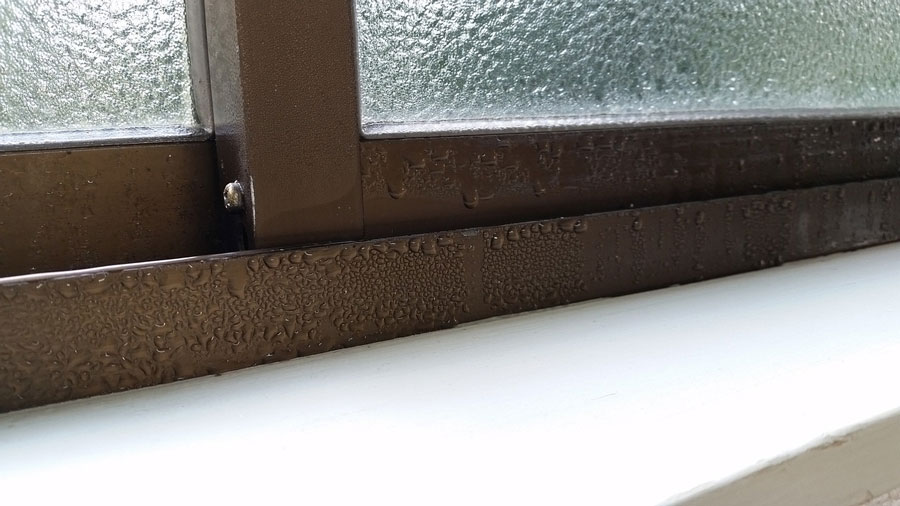Whether homeowners live in an area where they get a lot of rain or very little, exposure to water may cause leaking windows. Leaking windows frustrate homeowners, especially when they cannot figure out the specific cause. The rain itself is only part of the problem.
This post explores some common reasons that windows leak after it rains along with problems homeowners might experience if they do not repair their rain-damaged windows.
How Rainwater Damages Windows
Mold is a common outcome when rainwater collects around a windowsill. The damage typically begins within 48 hours of the last rainfall. Not only can mold spores damage the exterior of a home, but their odor can penetrate into the home and cause respiratory issues such as sneezing, coughing, difficulty breathing, a runny nose, and itchy eyes. Unfortunately, mold is not easy to remove. Homeowners will need to call a mold remediation specialist to remove it if it sits for more than a few days.
Poorly sealed windows can cause rain to come into the home and cause an electrical hazard if the water comes in contact with a nearby outlet. Rainwater in the home can also leak through a ceiling or floor and onto an electrical outlet that is nowhere near the point of entry. Homeowners should have an electrician inspect any outlets that have been near a leak before using it again.
Another problem with inefficient windows is that they can cause rainwater to come into the house. These leaking windows quickly soak certain areas.
Once wood starts rotting, it quickly decays and causes structural issues with the home. Each of these problems cause a loss in value and aesthetic appeal of the home as well as potential safety issues.
Sometimes Rainwater is Not the Actual Problem
Most people assume that rainwater leaves water behind on their windowpane or sill when the problem could be condensation instead. The glass portion of windows develop condensation when the warm air from inside the home comes in contact with colder outside air. Poor insulation around the windows has a significant impact on whether the windows will develop condensation.
Condensation can also occur between two panes of glass when the seal around the window has sustained damage. The damage allows argon gas between glass panes to escape and leave the home with reduced insulation.

Proper insulation is necessary to maintain indoor comfort in all four seasons. If the problem of condensation happens repeatedly, homeowners can consider hiring a contractor to determine if they have enough insulation and proper ventilation throughout the home.
Missing or Damaged Sealant or Caulk Around Windows
Although sealant and caulk are both simple to install, most homeowners do not consider their importance. Usually priorities change once an obvious problem emerges after rainfall.
When damage becomes apparent, homeowners will need to remove and replace any remaining sealant or caulking materials. Tightly sealed windows are essential to improve the efficiency of the heating and cooling system. They also prevent rainwater from getting into the house.
Leaking Walls
The exterior walls of a home can also sustain damage from repeated exposure to rainwater. Similar to window condensation, water stains on the drywall of a house does not necessarily indicate a problem with the windows.
Homeowners will need to inspect the area carefully to ensure that the water damage does not initiate with the roof, siding, or wall. However, not everyone will be able to pinpoint the problem if they do not have specialized training. Calling a professional to discern the cause of the damage and propose a solution is usually the best bet.
Missing or Improperly Installed Window Flashing
The term flashing refers to a type of material that homebuilders put on underneath the siding. The purpose of flashing is to keep rainwater from damaging the side of a house. When no flashing is present in the siding or if the installer put it in improperly, rainwater may go behind the siding and leak into the home. Rainwater can also travel down the house wrap and reach one or more window openings.
Homeowners want to avoid problems caused by missing or improperly installed window flashing. The alternative is potential damage that’s very expensive to repair. They will need to contact a window or siding contractor right away if damage has already occurred.
New Window Installation Could Be the Ideal Solution
People who have older homes with inefficient windows can benefit from having the windows replaced. As a rule of thumb, homeowners should consider replacing windows approximately every 20 years. This ensures that homes are energy efficient and protected from weather elements and leaking windows.
